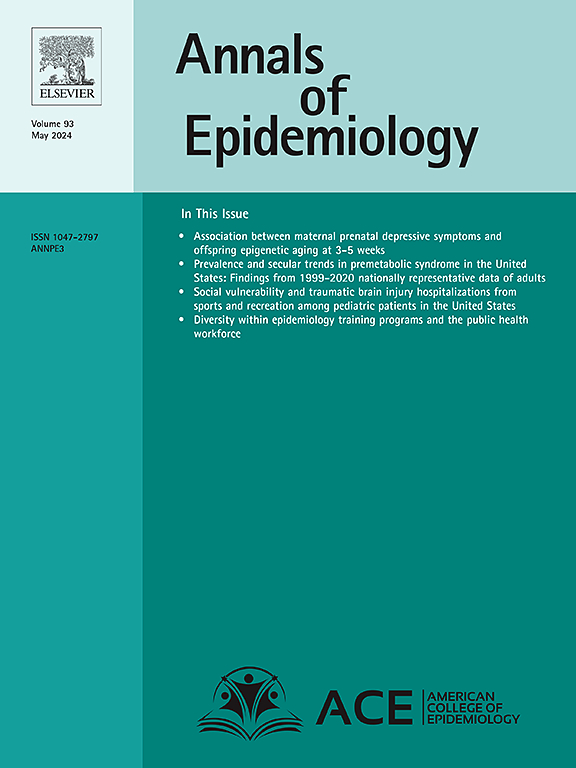Birth by Caesarean section and female offspring’s risk of Caesarean section delivery
IF 3.3
3区 医学
Q1 PUBLIC, ENVIRONMENTAL & OCCUPATIONAL HEALTH
引用次数: 0
Abstract
Background
The objective of this study was to examine the association of birth by Caesarean section (CS) with female offspring's risk of CS delivery.
Methods
We used data from the 3G Multigenerational Cohort, which includes women whose births and their own subsequent pregnancies and deliveries were recorded in the population-based Nova Scotia Atlee Perinatal Database. The current analysis was limited to the women's first delivery (n = 23,605). Confounding variables were identified using a directed acyclic graph. The association between birth by CS and later CS delivery was examined with Poisson regression adjusted for confounding variables.
Results
Seventeen percent of women were born via CS, and 23 % delivered by CS. Compared to women born vaginally, women born by CS had an adjusted relative risk (RR) of 1.36 (95 % confidence interval [CI] 1.30, 1.43) for delivering by CS. Restricting the sample to women born to nulliparous mothers did not change the association (RR 1.35), while restriction to women born out of low-risk pregnancies weakened it slightly (RR 1.25).
Conclusions
Birth by CS is associated with a 36 % increased risk of women delivering their first child by CS. This increase is likely due to shared medical and socio-cultural factors.
剖宫产与女性子代剖宫产的风险
背景:本研究的目的是探讨剖腹产(CS)分娩与女性后代CS分娩风险的关系。方法我们使用3G多代队列的数据,其中包括在以人口为基础的新斯科舍省阿特利围产期数据库中记录的分娩及其随后的怀孕和分娩的妇女。目前的分析仅限于妇女的第一次分娩(n = 23,605)。使用有向无环图识别混杂变量。用泊松回归校正了混杂变量,检验了CS出生和后来的CS分娩之间的关系。结果17%的女性通过CS出生,23% 通过CS分娩。与顺产妇女相比,经阴道分娩的妇女经阴道分娩的调整相对危险度(RR)为1.36(95 %可信区间[CI] 1.30, 1.43)。将样本限制在未生育的母亲所生的女性中并没有改变这种关联(RR为1.35),而将样本限制在低风险怀孕的女性中则略微削弱了这种关联(RR为1.25)。结论CS分娩与女性通过CS分娩第一胎的风险增加36% %有关。这一增长可能是由于共同的医疗和社会文化因素。
本文章由计算机程序翻译,如有差异,请以英文原文为准。
求助全文
约1分钟内获得全文
求助全文
来源期刊

Annals of Epidemiology
医学-公共卫生、环境卫生与职业卫生
CiteScore
7.40
自引率
1.80%
发文量
207
审稿时长
59 days
期刊介绍:
The journal emphasizes the application of epidemiologic methods to issues that affect the distribution and determinants of human illness in diverse contexts. Its primary focus is on chronic and acute conditions of diverse etiologies and of major importance to clinical medicine, public health, and health care delivery.
 求助内容:
求助内容: 应助结果提醒方式:
应助结果提醒方式:


